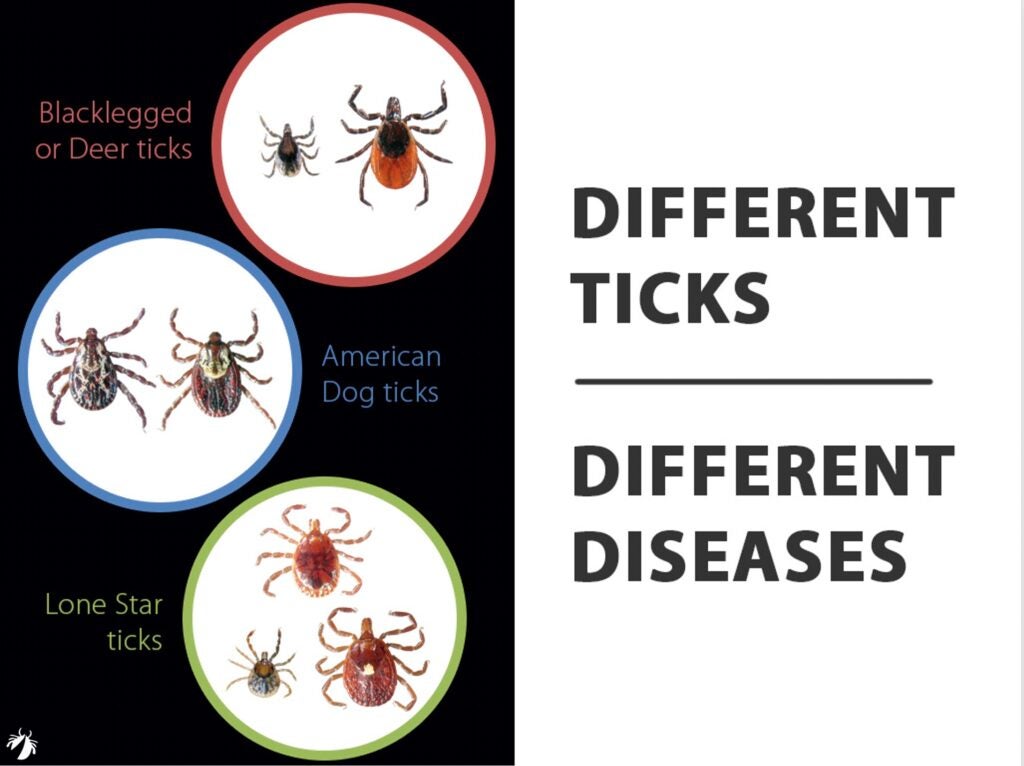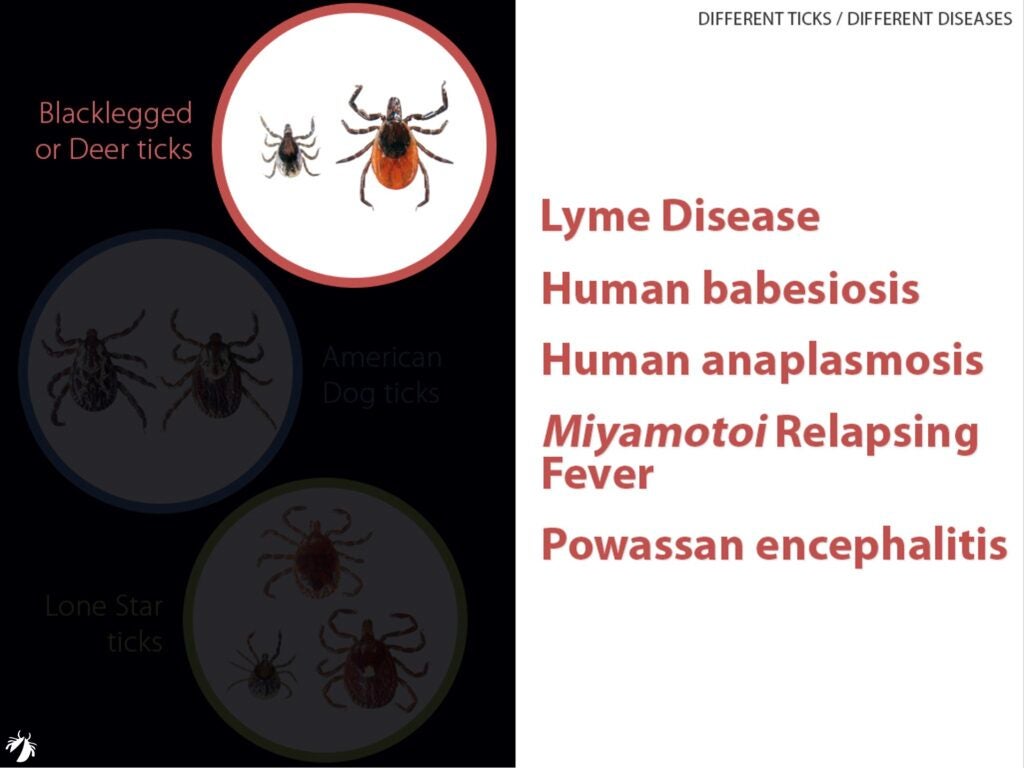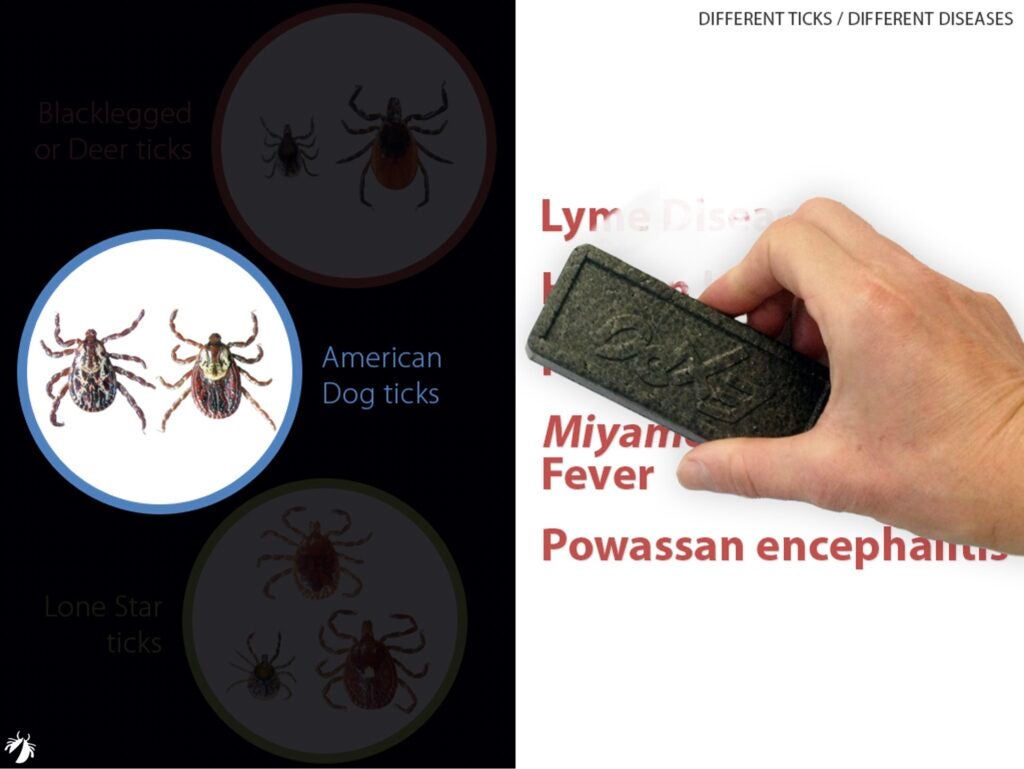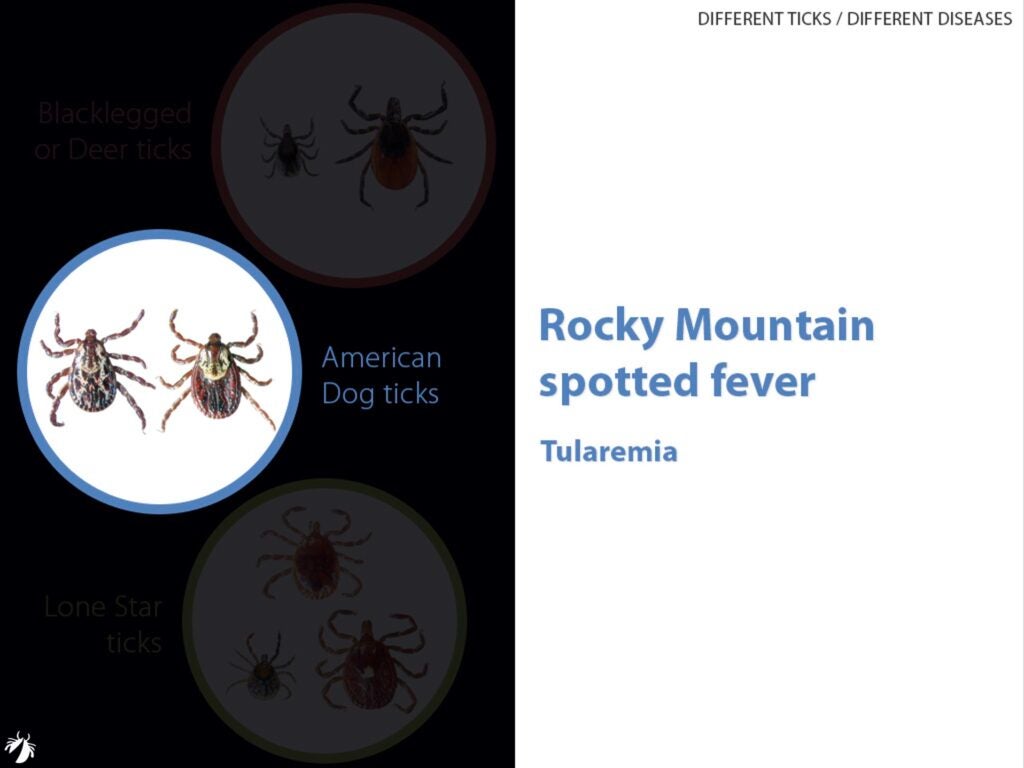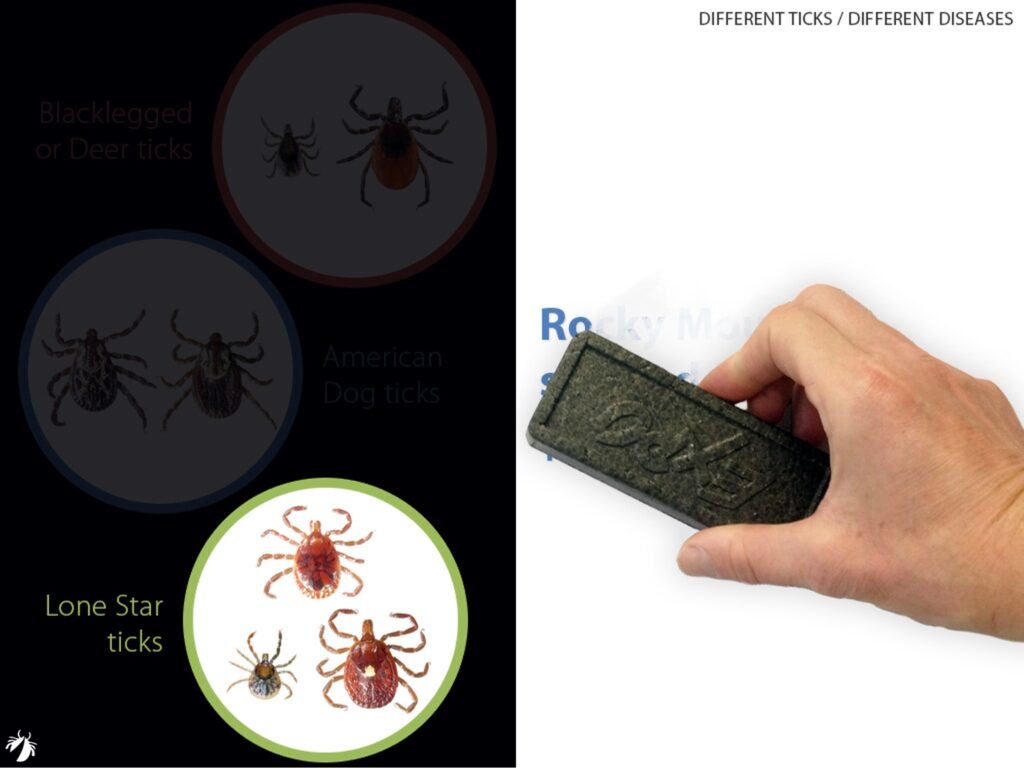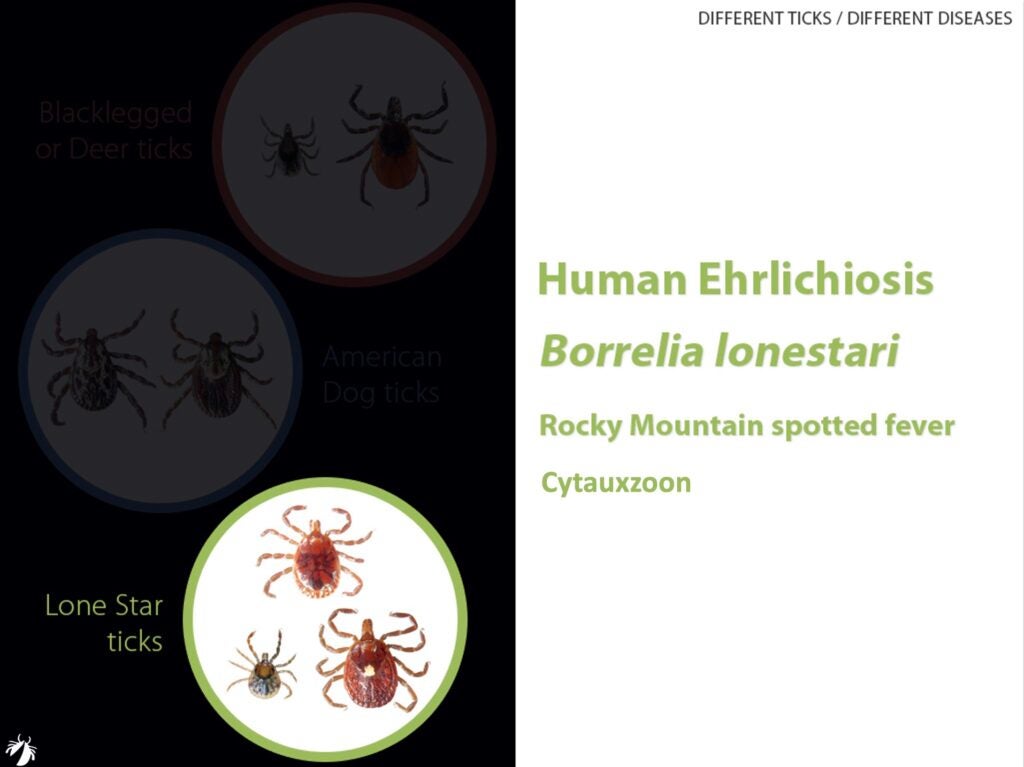[scroll down for photo gallery]
We think everyone should know how to identify the different types of ticks they might encounter where they live. It’s one of our 5 core TickSmart actions…KNOW THE DIFFERENT TYPES OF TICKS THAT LIVE WHERE YOU LIVE! But WHY is knowing the type of tick you encounter so important. Aren’t all ticks “risky”?
Well, yes, sort of. All types of ticks do have the potential for becoming infected and transmitting some kind of disease-causing germ. Some types of ticks can transmit many different types of germs, even in the same bite. Because ticks blood-feed on various hosts, they might ingest germs the host is carrying in its blood. But the story is more complicated. Ingesting germs, becoming infecting, amplifying the number of germs, and then transmitting a disease-causing dose in their next blood meal all must occur for a tick to be considered competent as a vector for any particular type of disease. Vector competence is the sciencey term entomologists use to describe the ability of vectors (ticks, mosquitoes, fleas, etc) to become both infected AND be infective when they bite again. For instance, many people believe that every type of tick — blacklegged, dog, lone star, Gulf Coast, wood, Pacific Coast — can infect people and pets with the germ causing Lyme disease, and other germs as well. But many types of ticks are just not vector-competent for the Lyme disease germ. Dr. Steve Rich, is a professor of medical microbiology and entomology at the University of Massachusetts, and creator of TickReport, a popular tick testing laboratory. To date, his team has tested 13,896 American dog ticks and 12,268 lone star ticks found biting people and pets from across the U.S. but have not detected the Lyme disease germ in any of those two types of ticks.
In an experiment conducted back in 1990, the larval stages of blacklegged ticks, American dog ticks and lone star ticks were blood-fed on the same Lyme disease-infected mice but when those larvae-stage ticks transformed into nymphs, only the blacklegged ticks were able to transmit an infection to other never-before infected mice.1 This experiment was a direct test of vector competence. It’s good to remember that it’s not enough to only find evidence of specific types of disease-causing germs in a tick; it’s critical to determine under closely scrutinized experiments if particular germs are transmitted by specific types of ticks AND cause infection. We now have a critical mass of these types of experiments which is why we can confidently say “different types of ticks transmit different types of germs.” Know the type of tick and you’ll have a better idea of your disease risk.
*view the photo gallery to see which types of ticks are mostly responsible for which tickborne diseases (hold mobile device sideways for best view)
1Mather, T.N. and M.E. Mather. 1990. Intrinsic competence of three ixodid ticks (Acari) as vectors for the Lyme disease spirochete. J. Med. Entomol., 27:646-650.
Need help with tick id?
